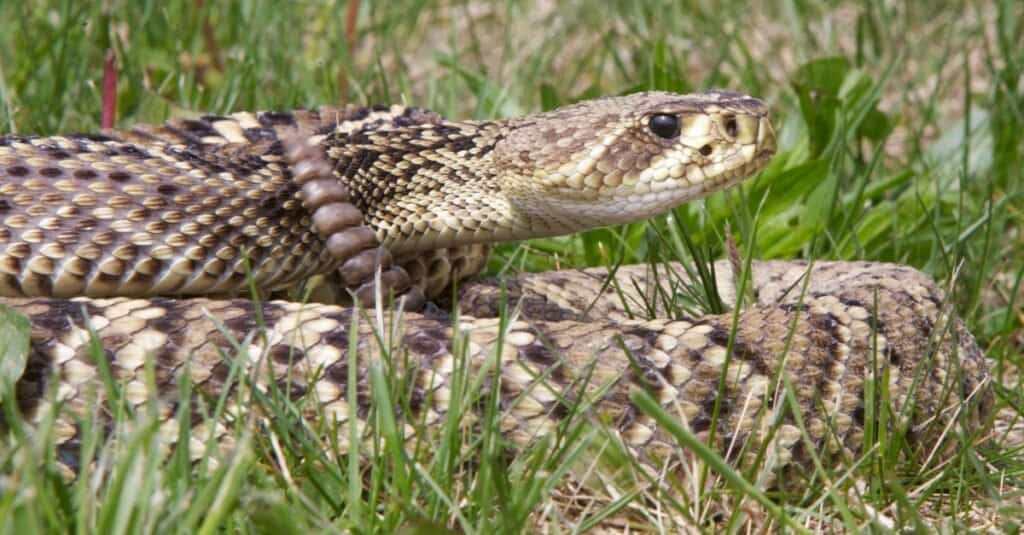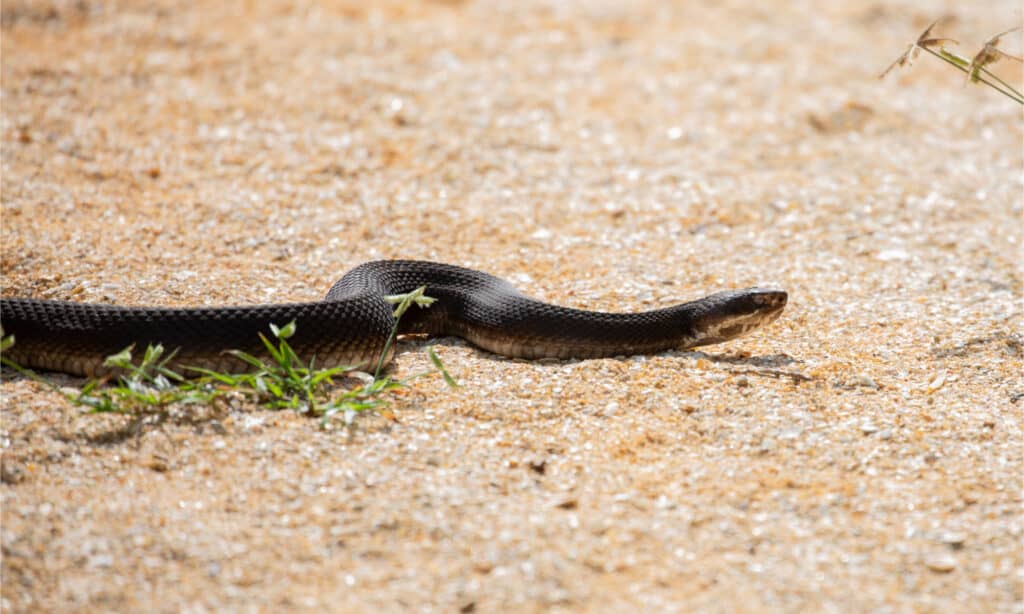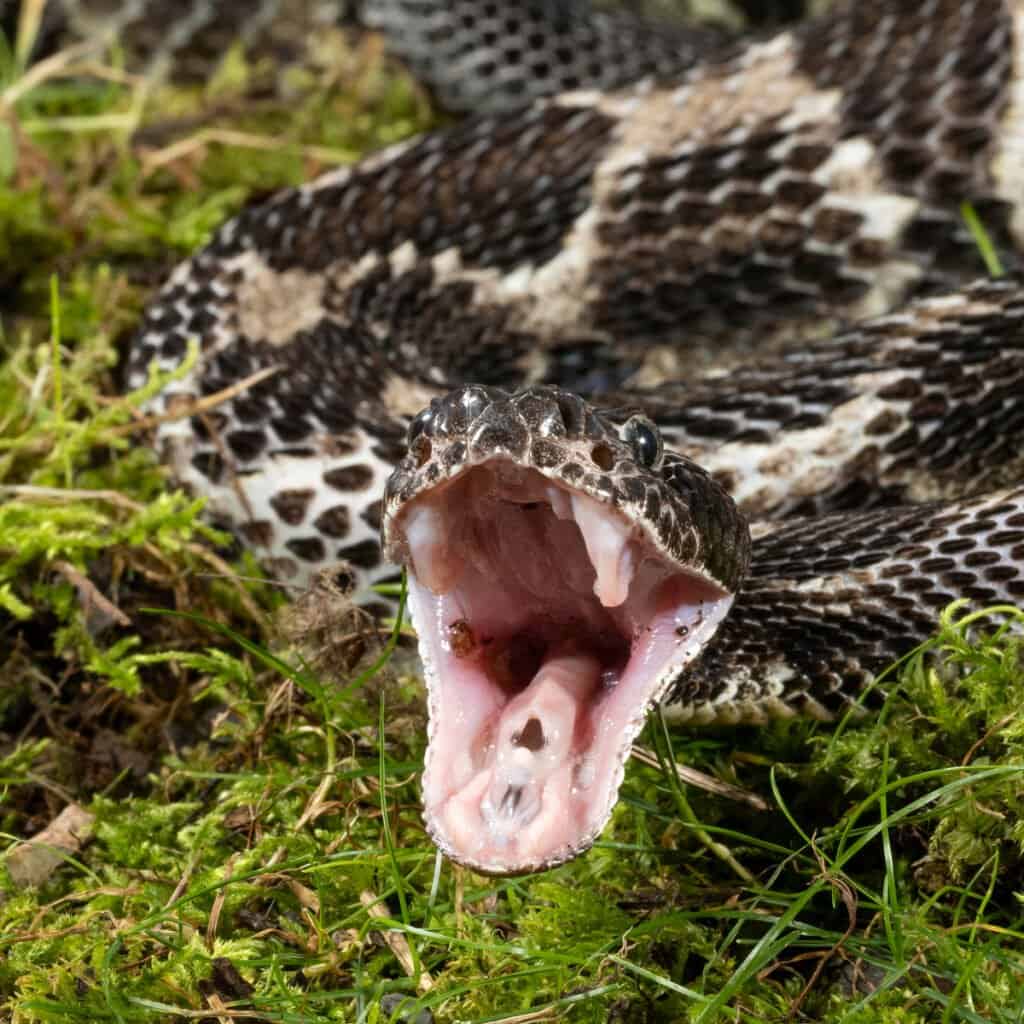Snakes are most active during the spring and summer months, because things start to warm up. During this period, they come out of hibernation and begin to look for food and mates. This is why it’s quite common to find them slithering around during this time of the year. Alabama is home to over 40 species of snakes, consisting of both venomous and nonvenomous snake populations. Luckily, there are only six dangerous snake species in Alabama — making Alabama one of the least dangerous snake zones in the United States.
The rest are harmless snakes and are even considered great pets by snake enthusiasts. Unfortunately, venomous snakes in Alabama during the summer are highly dangerous creatures. Getting bitten by any of these snakes can cause life-threatening symptoms, and even death, if medical treatment is not received immediately. So, it’s important to identify these venomous snakes so you’ll be able to avoid them completely – or leave them alone if they cross your path.
Read on below to discover the largest and most dangerous snakes you’re likely to encounter in Alabama during the summer.
Alabama’s 5 Largest and Most Dangerous Snakes
Eastern Diamondback Rattlesnake

The most dangerous venomous snake in North America is the eastern diamondback
rattlesnake
.
©iStock.com/NajaShots
The eastern diamondback is the heaviest, largest venomous snake in the state of Alabama. One specimen found in 1946 measured about 7.8 ft in length and 34 lb in weight! The eastern diamondback rattlesnake is brownish with a series of dark brown to black diamond patterns. This rattlesnake species inhabits dry pine forests, sandhills, palmetto flat woods, woodlands, and hammocks. During the summer, it shelters in burrows made by gophers and tortoises, emerging in the early morning or afternoon to bask. The eastern diamondback rattlesnake is considered the most dangerous venomous snake in entire North America. It is large and powerful, with the longest fangs of any rattlesnake species. When threatened, it forms an S-shaped coil, and can strike to a distance of at least a third of its body length! Despite eastern diamondbacks bad-boy reputation, they’re actually non-aggressive and they only bite humans when threatened.
Copperhead

Copperheads often employ warning bites that contain low venom.
©Creeping Things/Shutterstock.com
The copperhead is a pit viper venomous species often found in deciduous forests and mixed woodlands of Alabama. Reaching an adult length of approximately 3 feet, copperheads have a relatively stout brownish body with distinctive dark-brown hourglass-shaped markings. During the hot summers of Alabama, they are nocturnal. Unlike other viperids, these heavy-bodied species have a special ability to ‘‘freeze,’’ using their camouflage coloration to make themselves almost impossible to notice in leaf litter or soil. As a result of this, they strike when people unknowingly step on or near them. However, they often employ warning bites that contain relatively small amounts of venom or dry bites which involve no venom at all. So, bites from copperheads are rarely fatal. They feed on a wide variety of prey, including vertebrates and invertebrates.
Northern Cottonmouth

The Northern cottonmouth is the only venomous water snake in Alabama.
©Linda Burek/Shutterstock.com
Northern Cottonmouth, also called water moccasin snake, is usually found in or near bodies of water, particularly in slow-moving and shallow lakes, streams, and marshes throughout Alabama. They are the only species of venomous water snakes in Alabama.
Cottonmouths are large snakes, with adults reaching up to 26 to 72 inches in total body length. Some specimens are extremely bulkier with heavy muscular bodies. Most individuals are black with dark brown crossbands and blunt snouts. When threatened, a cottonmouth snake vibrates its tail as a warning, then throws its head back, opening its mouth to reveal a distinctive white interior –this particular behavior earned it its name. It also can deliver a painful and potentially fatal bite, rich with a powerful cytotoxic venom that destroys tissues. Bites rarely lead to death but can leave scars or cause severe tissue destruction, requiring amputation.
Eastern Coral Snake

The eastern coral snake has the most potent venom of any snake in North America.
©iStock.com/JasonOndreicka
If you encounter a colorful slender snake with wide red and black rings separated by narrow yellow bands, and black specks in its red bands, then you’re most likely looking at an eastern coral snake. A popular folk rhyme used to differentiate between the coral snake and its look-alike, the harmless king snake is; “Red next to black, safe from attack; red next to yellow, you’re a dead fellow,” However, this is not always reliable because of variations in individual snakes. The population of this highly venomous snake is rapidly declining in Alabama, perhaps due to the invasion of fire ants preying on its eggs and young snakes. Known to have the most potent venom of any snake in North America, the venom of the eastern coral snake contains a potent neurotoxin that causes respiratory failure and rapid muscular paralysis. Contrary to what you’d expect from such a dangerous species, this snake is not aggressive and rarely bites humans. They feed on lizards, frogs, and smaller snakes, including other coral snakes.
Timber Rattlesnake

Timber rattlesnakes are considered one of North America’s most dangerous snakes.
©Joe McDonald/Shutterstock.com
A heavy-bodied snake with long fangs and a characteristic rattle on the tail, the timber rattlesnake is present in various habitats throughout most of Alabama. Generally, this species is found in deciduous forests in rugged terrain. During summer, the pregnant females of this species prefer to bask in open rocky areas where the temperature is higher, while nongravid females and male timber rattlers often spend more time in cooler, denser woodland. Adult timber rattlesnakes usually grow to 36 to 60 inches in length and their bodies have a dorsal pattern of dark brown or black crossbands on yellowish-brown or grayish background. The crossbands often have jagged zig-zag edges, and may be V- or M-shaped.
Timber rattlesnakes have been considered one of North America’s most dangerous snakes because of their high venom yield. Before striking, they perform characteristic rattling and feinting displays that alert their prey to their attack. However, they are docile and rarely bite humans. Their diet consists of small mammals, such as mice, shrews, chipmunks, squirrels, and occasionally frogs and birds.
Summary of Alabama’s 5 Largest and Most Dangerous Snakes
| Rank | Snake |
|---|---|
| 1 | Eastern Diamondback Rattlesnake |
| 2 | Copperhead |
| 3 | Northern Cottonmouth |
| 4 | Eastern Coral Snake |
| 5 | Timber Rattlesnake |
The photo featured at the top of this post is © iStock.com/Paulo Almeida
Discover the "Monster" Snake 5X Bigger than an Anaconda
Every day A-Z Animals sends out some of the most incredible facts in the world from our free newsletter. Want to discover the 10 most beautiful snakes in the world, a "snake island" where you're never more than 3 feet from danger, or a "monster" snake 5X larger than an anaconda? Then sign up right now and you'll start receiving our daily newsletter absolutely free.
Thank you for reading! Have some feedback for us? Contact the AZ Animals editorial team.






